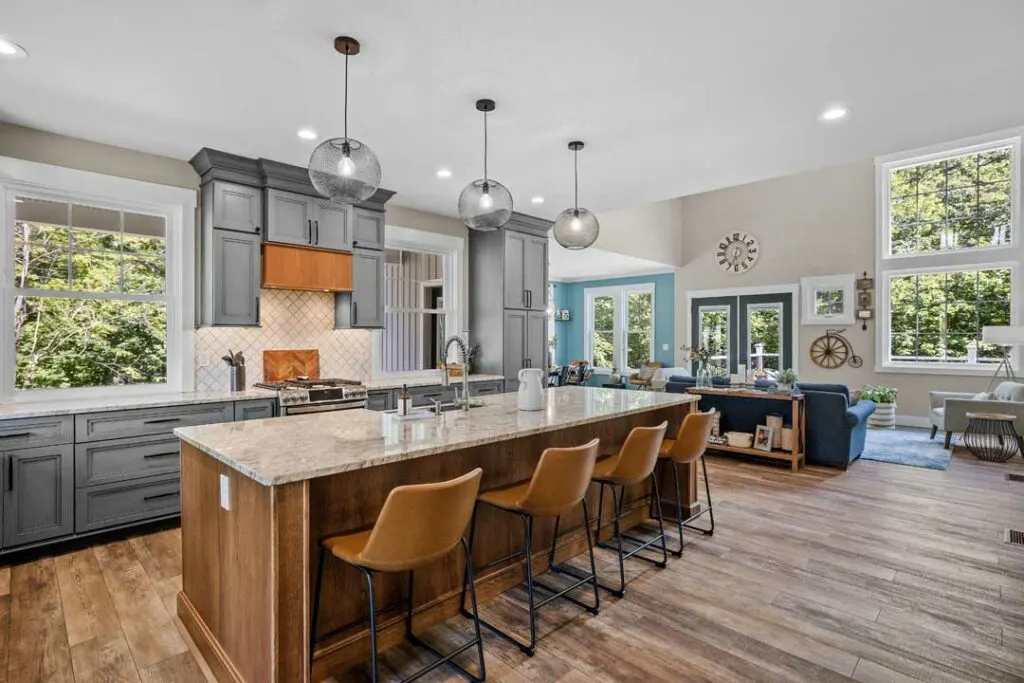Transform your kitchen photos into captivating works of art with expert tips for natural light kitchen photography!
Looking to elevate your kitchen photography? Natural light is the ultimate tool for creating warm, inviting, and visually stunning images. By mastering the art of natural light kitchen photography, you can highlight the textures, colors, and charm of your kitchen. Let’s explore how to make every shot shine.
Master Natural Light Kitchen Photography

The kitchen is the heart of the home— where memories are made, meals are prepared, and tales are shared. But how can you capture all of this flawlessly in a photograph? Natural light is essential. Natural light, unlike harsh artificial lighting, has the unique ability to highlight the beauty of a kitchen, resulting in warm, inviting, and realistic images. In this article, we’ll go over how to use natural light to shoot your kitchen in all of its glory, from early morning rays to the golden glow of sunset.
What Makes Natural Light So Great?
For a number of reasons, natural light is frequently employed in photography. First of all, compared to harsh artificial lighting, it is softer and more aesthetically pleasing. A diffused radiance that is easy on the eyes and uniformly exposes subjects is produced when sunshine streams in through the windows of a room. Additionally, it reduces shadows and accentuates the inherent beauty of kitchenware such as wood cupboards, worktops, and cooking appliances.

Natural light has the distinct benefit of being dynamic. As the sun moves across the sky, the quality and direction of the light shift, creating a range of moods and aesthetics throughout the day. This adaptability allows you to shoot a range of images according on the atmosphere you want to create.
Furthermore, natural light creates a sensation of warmth and friendliness. In a kitchen, where the area is frequently connected with family, food, and shared experiences, this warmth translates into pleasant and cozy images that fit perfectly into natural tone photo insert cards.
Best Times of Day
When it comes to harnessing natural light in photography, timing is everything. The optimal times of day to shoot depend on the vibe you want to create in your photographs. Here’s an overview of the various times of day and the characteristics they offer to your kitchen photography:
Morning Light: Crisp and Clear
Early morning light is usually crisp, fresh, and gentle. If you want to get a clean and sharp image in your kitchen photos, now is the time to shoot. The light in the morning is often cooler in tone, giving the space a bright and airy sense. This is ideal for capturing a clean, modern kitchen with white surfaces and a minimalist aesthetic.

Morning light is best used when the sun is low on the horizon. The shadows are lengthy and gentle, avoiding stark contrasts and providing uniform illumination across the area. If your kitchen faces east or northeast, you’ll have direct access to the stunning early morning light. You may also utilize early light to bring out details in the kitchen. The subtle glow will highlight the textures of your counters, the natural wood of your cabinets, or the intricacies of your foodstuffs if you’re filming a culinary scene.
Evening Golden Hour: Capturing Warm Tones
One of the finest times to capture photos is during golden hour, which occurs shortly before sunset. The calm, warm, and diffused light during this time lends your kitchen images a golden glow, creating a friendly and inviting ambiance. The warm tones of golden hour add depth and richness to your photographs, making them ideal for creating a welcome and friendly atmosphere.
Golden hour light works especially well in kitchens with warm tones, such as hardwood furniture, warm-colored cabinets, and copper or brass accessories. The golden tones will highlight these details, resulting in a rich and textured appearance that looks stunning in photographs. Keep in mind that golden hour only lasts a brief time, therefore timing is essential.
Midday Sun: When to Avoid and How to Use It
When the sun is at its highest point in the sky, it may be harsh and unattractive to shoot. The light is bright, and the shadows may be harsh and distracting, making your kitchen appear overexposed or poorly lit. Furthermore, noon light might make certain portions of your kitchen look overly bright while leaving others in the shadows. While noon sunlight is often unsuitable for kitchen photography, it should not be avoided totally.
There are inventive ways to use it, especially if your kitchen has huge windows that allow in plenty of light. To get dramatic effects, try shooting subjects directly in the light or using high contrast pictures. Let’s talk about how noon light can be filtered to reduce and redirect its intensity.

Diffusing & Reflecting Window Light
Diffusing and reflecting natural light are efficient strategies for generating soft, appealing lighting in the kitchen, no matter what time of day it is.
To disperse window light, lessen the intensity of direct sunlight using sheer curtains, white fabric, or a transparent shower curtain. These will disperse the light, resulting in a gentle, even glow ideal for photographing minute details in the kitchen. Diffusion panels or softboxes may be used to manipulate the light and produce more attractive shadows, which is great for food photography.
Reflecting light helps to illuminate darker regions of the kitchen by reflecting light into shadows. Simple tools for achieving uniform exposure include white walls, foam boards, and mirrors. Reflectors are especially useful in the late afternoon or evening when the light is softer but less strong; they may also be used to highlight certain kitchen items such as dishes or fruit.
Natural Light is Your Path to Gorgeous Kitchen Photography
Using natural lighting in your kitchen Photography is a simple and effective method for creating stunning, warm, and inviting photographs. Natural light’s warm, attractive attributes may highlight the greatest aspects of your kitchen, from textures to color palette. Understanding the best times of day to shoot—whether it’s the crisp morning light, the warm glow of golden hour, or even playing with noon light—will allow you to employ natural light to create a great visual tale. So, take your camera, enjoy the natural light in your kitchen, and get to shooting!
Author’s Byline: Dmytro Zubenko is an experienced content creator specializing in photography techniques and equipment. With a deep passion for capturing stunning images and exploring innovative tools, Dmytro provides valuable insights into photography tips, gear reviews, and creative shooting approaches. His writing inspires enthusiasts and professionals to elevate their photography skills and embrace their artistic vision.

Jessi is the creative mind behind The Coffee Mom, a popular blog that combines parenting advice, travel tips, and a love for all things Disney. As a trusted Disney influencer and passionate storyteller, Jessi’s authentic insights and relatable content resonate with readers worldwide.
